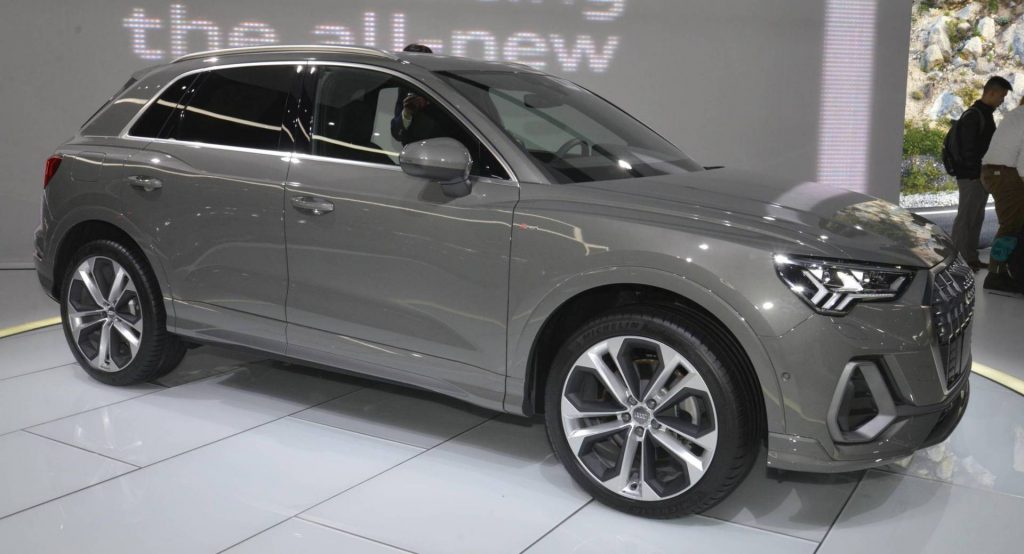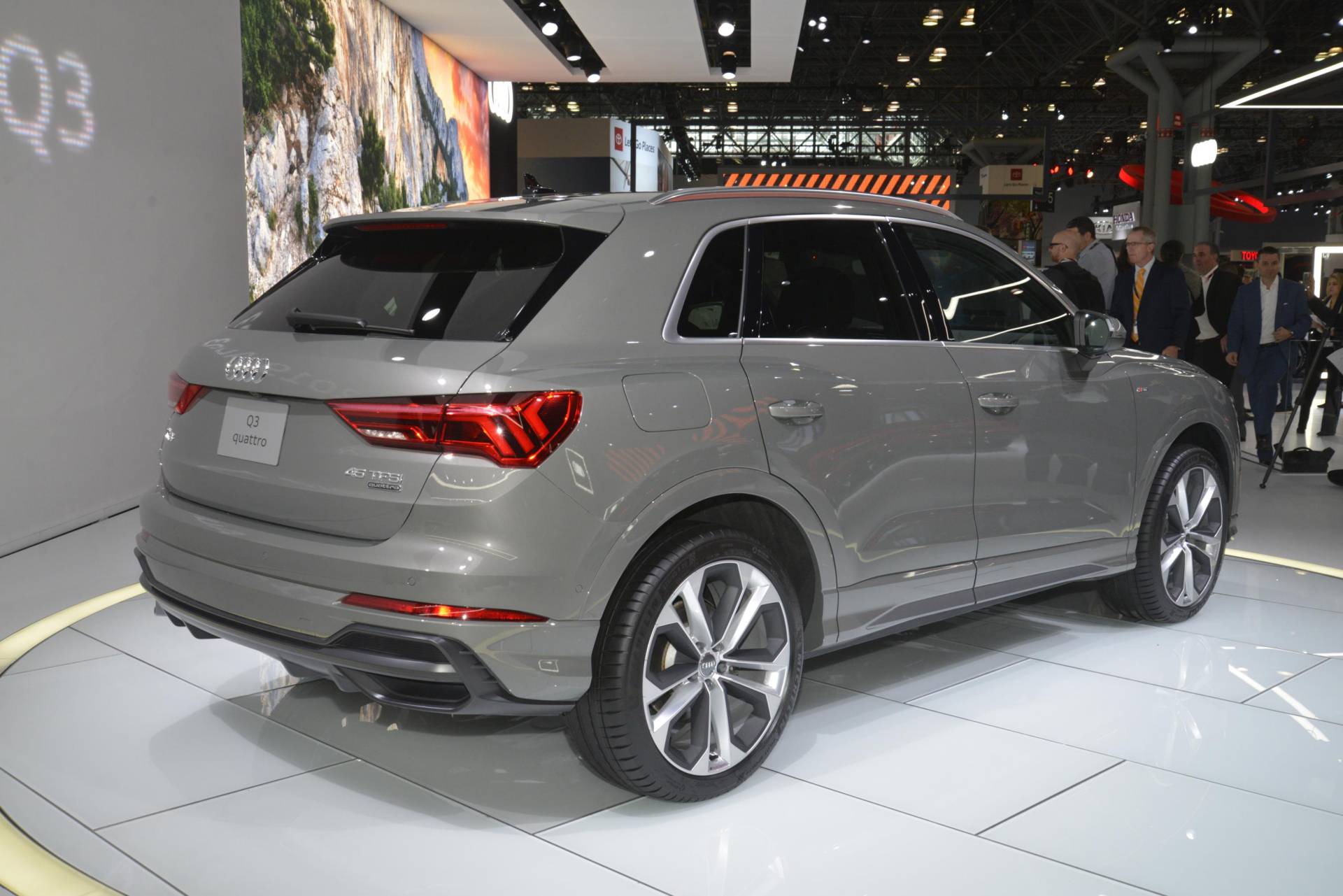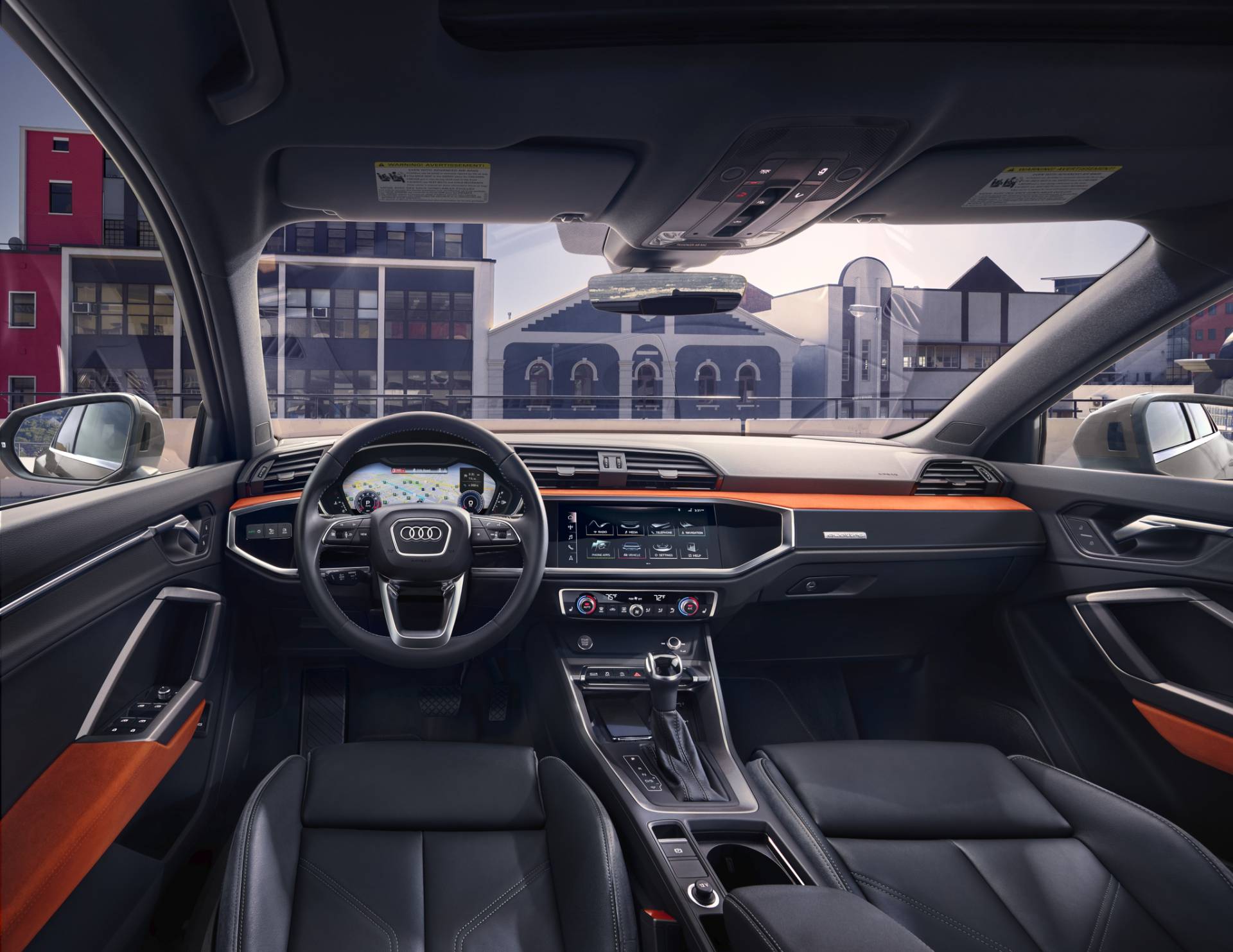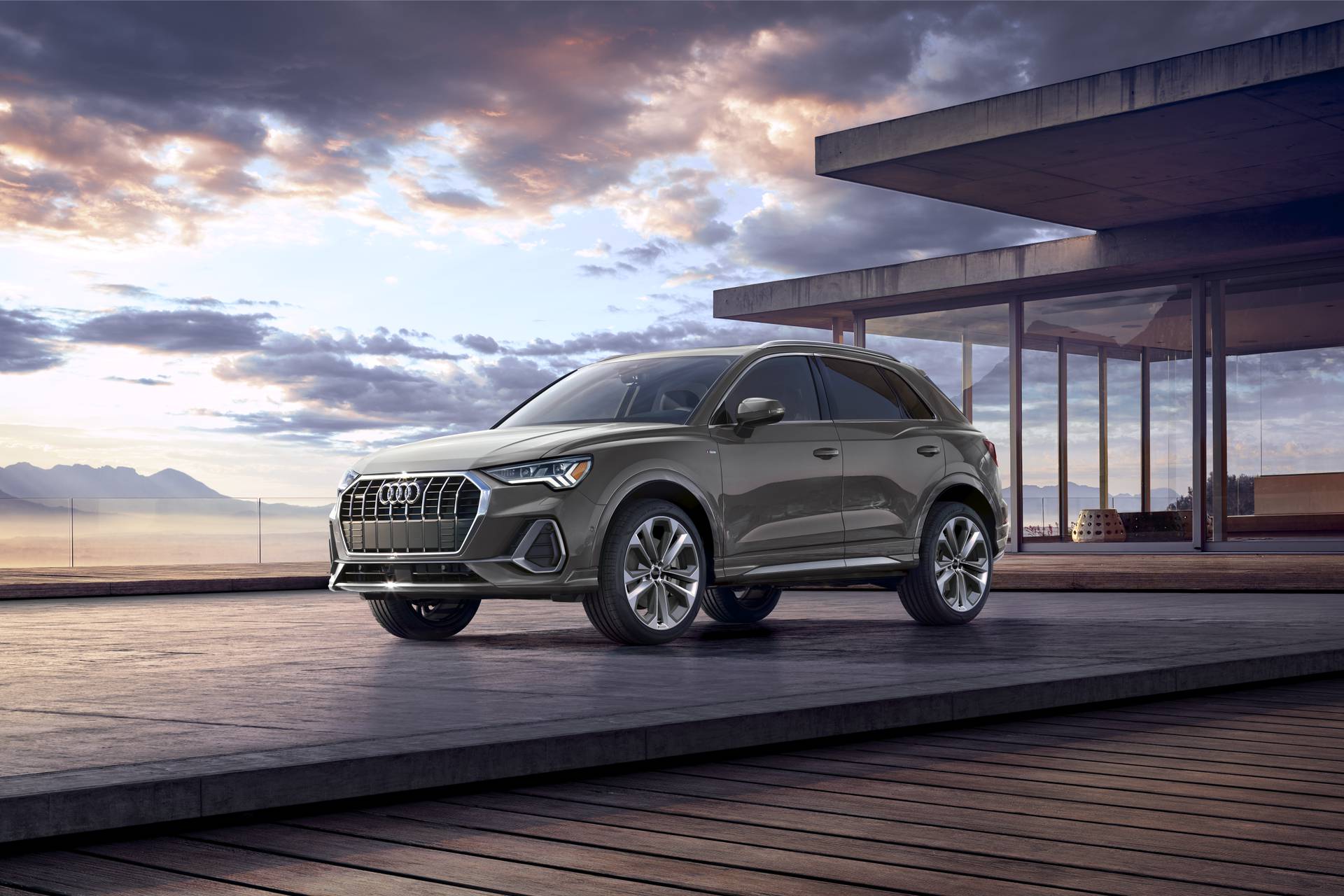On sale in Europe since November 2018, the second-generation Audi Q3 is only just now making its U.S. debut at the New York Auto Show.
The compact SUV marks a major departure from its predecessor model which launched back in 2011, but needed until 2014 to reach the U.S. market. The most significant update is the shift from the Golf Mk5 platform to the modern MQB modular architecture, making the Q3 1.5 inches (38 mm) taller, 3.8 inches (96 mm) longer and nearly an inch (25 mm) wider than its predecessor.
The result is a roomier interior, up-to-date technology and driver assistance systems, and a new engine. The 2019 Q3 features a driver-centric cockpit featuring a standard 10.25-inch (available 12.3-inch) digital instrument cluster alongside a standard 8.8-inch (available 10.1-inch) MMI touch response display. The new MMI infotainment system features acoustic feedback, voice control, and available handwriting recognition.
The climate control area is also redesigned and under it, customers can have the optional Audi phone box which provides both inductive charging and a signal booster. Safety-wise, the 2019 Audi Q3 offers Audi Pre Sense Basic and Audi Pre Sense Front as standard, with many other systems available as options.
Audi says rear seat passengers gain the most from the Q3’s increased dimensions, as the standard 40/20/40 split folding, sliding and reclining seatback offers more overall room than the outgoing model. Furthermore, the rear cargo area is both larger and more flexible than before, thanks to an adjustable load floor.
While European markets get seven engine/transmission combinations, the U.S. gets only one — albeit the most powerful of all (for the Q3 series, that is). That’s the 2.0-liter TFSI four-cylinder gasoline engine that makes 228 hp and 258 lb-ft (349 Nm) of torque. The only transmission available is the eight-speed Tiptronic automatic and the quattro all-wheel-drive system is standard too.
U.S. prices start from $34,700, excluding $995 destination.




















